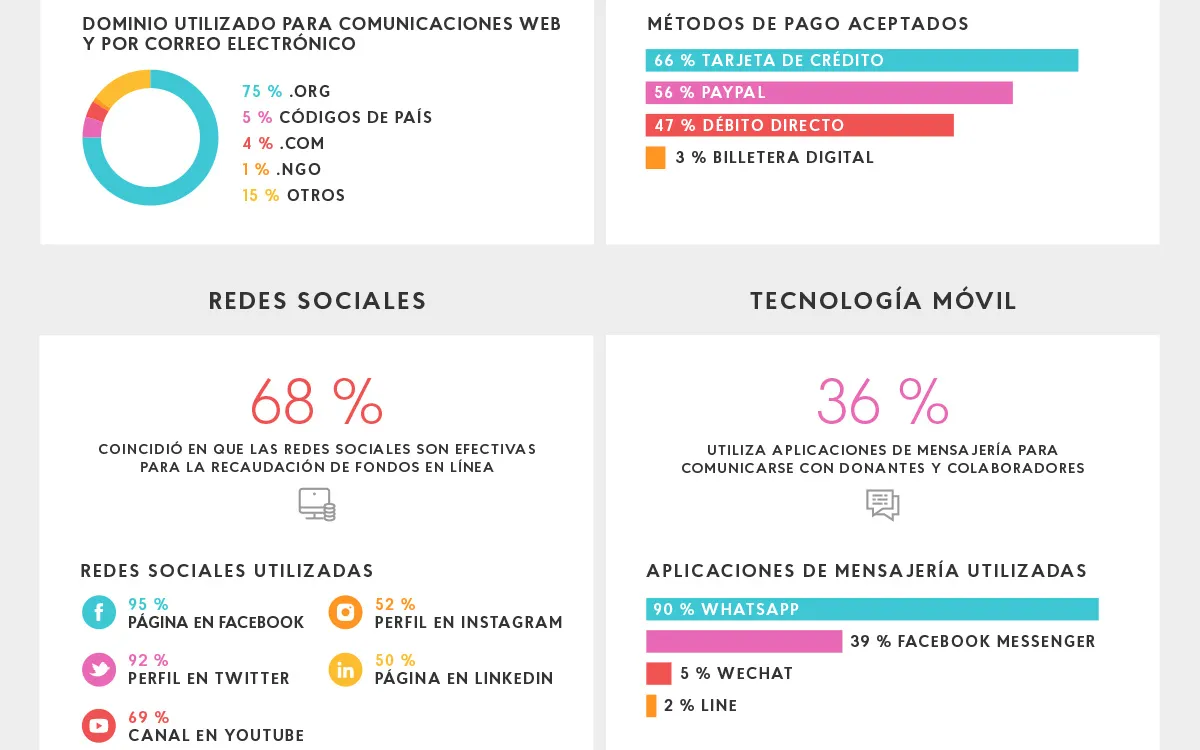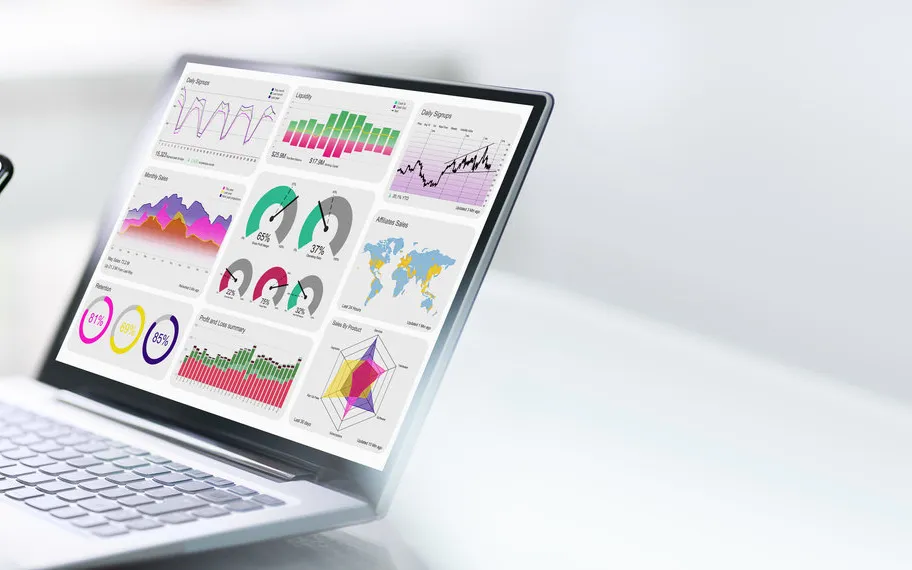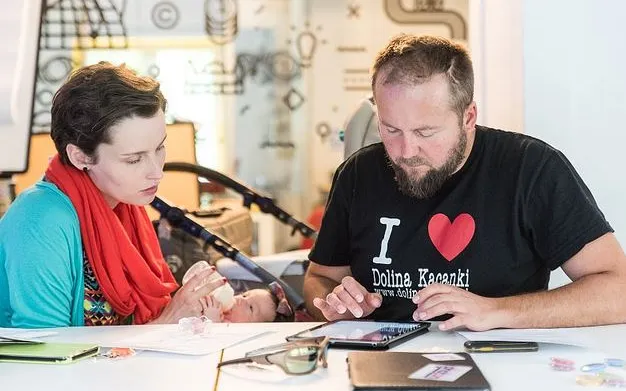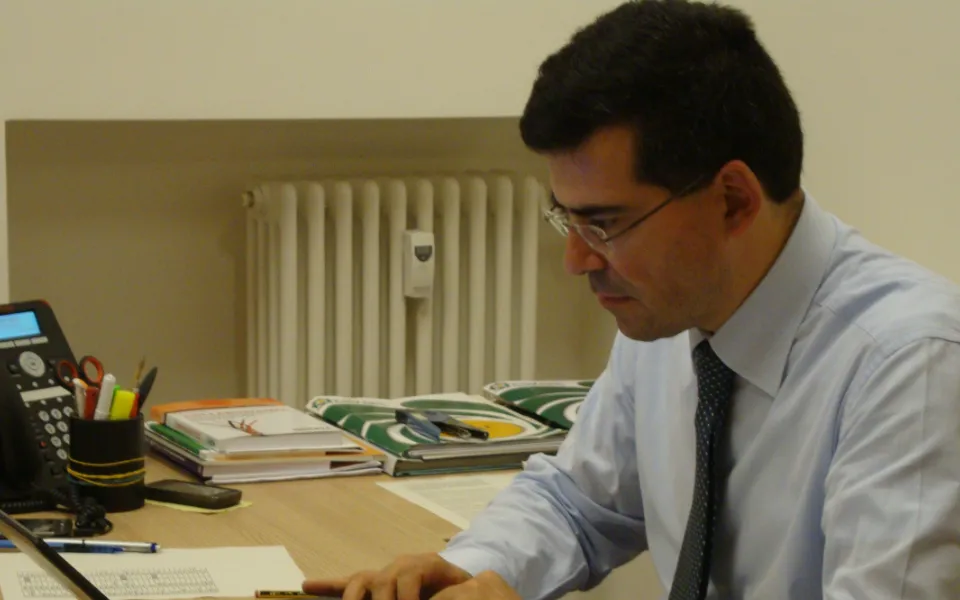North American organization Nonprofit Tech fo Good has released its annual report regarding NGOs and the use of technology and social networks in a global scale.
How do organizations connect with big audiences? How do they face cybersecurity? Do they use online funding platforms?
5352 NGOs from 164 countries have taken part in the report, which includes organizations from every continent.
Among the international organizations that have taken part in the report...
- 92% of them have a website.
- 68% of them use the .org domain, which already has more than 10.3 million registered users.
- Mailing is the common cannel of cummunication, but 18% of them use mobile applications and 15% use mobile messaging.
- Compared to 2017, the use of online funding platforms has increased a 5% among non-lucrative associations. 72% of the NGOs that took part in the report use them.
- 95% agree on the importance of social network, but only 32% has a strategic communication plan.
- Facebook page (93%) Twitter account (77% ) and Youtube account (57%).
- 80% of NGOs trust Microsoft Windows when it comes to computers and Apple iOS when it comes to phones and tablets.
- Only 41% use encryption to protect their data.
Differences in the use organizations do of technology by continent
In Africa
- 74% of NGOs have a website (compared to a global 92%).
- 55% (compared to a global 72%) have an online donation platform.
- To contact their donors they use: WhatsApp (69%), Facebook Messenger (52%), Viber (4%).
- Facebook page (85%) Twitter (62%) Linkedin (39%)
- Google Android is the most popular system.
In Asia
- 81% have a website, and 86% of them have a mobile version.
- Compared to 2017, the use of donation platforms has spreaded 9%: nowadays, 56% of Asian organizations have an online donation platform.
- To contact their donors they use: WhatsApp (69) Facebook Messenger (52%) Viber (9%).
- Facebook (86) Twitter (62%).
- 62% trust Google Android.
In Europe
- 97% have a website, and 86% of them have a mobile version.
- 59% of the European organizations that took part in the report accept donation online.
- To contact their donors they use e-mail: only 17% of them use mobile apps for their organization, especially WhatsApp.
- Facebook (94%), Twitter (80%), LinkedIn (58%).
In North America
- 98% have a website, and 88% of them have a mobile version.
- 56% of the North American organizations that took part in the report accept donation online, the same as Asian organizations.
- Facebook (97%), Twitter (85%), LinkedIn (63%) and Instagram (61%).
- To contact their donors they use e-mail: only 10% use mobile apps like WhatsApp and Snapchat.
In South America
- 88% have a website, andd 87% has a mobile version.
- 56% of the North American organizations that took part in the report accept donation online.
- To contact their donors, 40% of them use mobile apps instead of using e-mails.
- Facebook (98%), Twitter (71%), Instagram (55%) i LinkedIn (41%).
What can we learn from this report?
Globally, organizations still have a long way to go about the usage of free code OS such as Linux-Ubuntu. Almost all organizations use Microsoft instead, and there is a general lack of interest in data encryption and cyber security.
On the other hand, if we compare the Asian case with the African case we notice that Asian organizations use technology only slightly more than the African ones. This is strange if we think how technology has become much important in many Asian countries, and it may imply that, unlike Asian companies, Asian non-lucrative organizations are still disconnected.
When it comes to social networks, the usage of Facebook is remarkable in worldwide organizations. Both in North America and South America the social networking is diverse, even if Facebook remains the leading channel. The usage of a wider range of social networks should globally offer better audience results. However, from iWith.org we recommend small organizations to concentrate their efforts in a couple of social networks and not trying to update many of them in the same time.










Add new comment